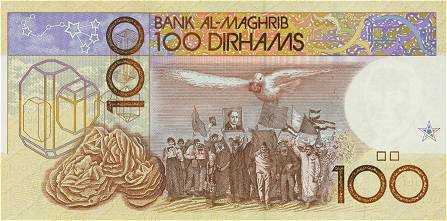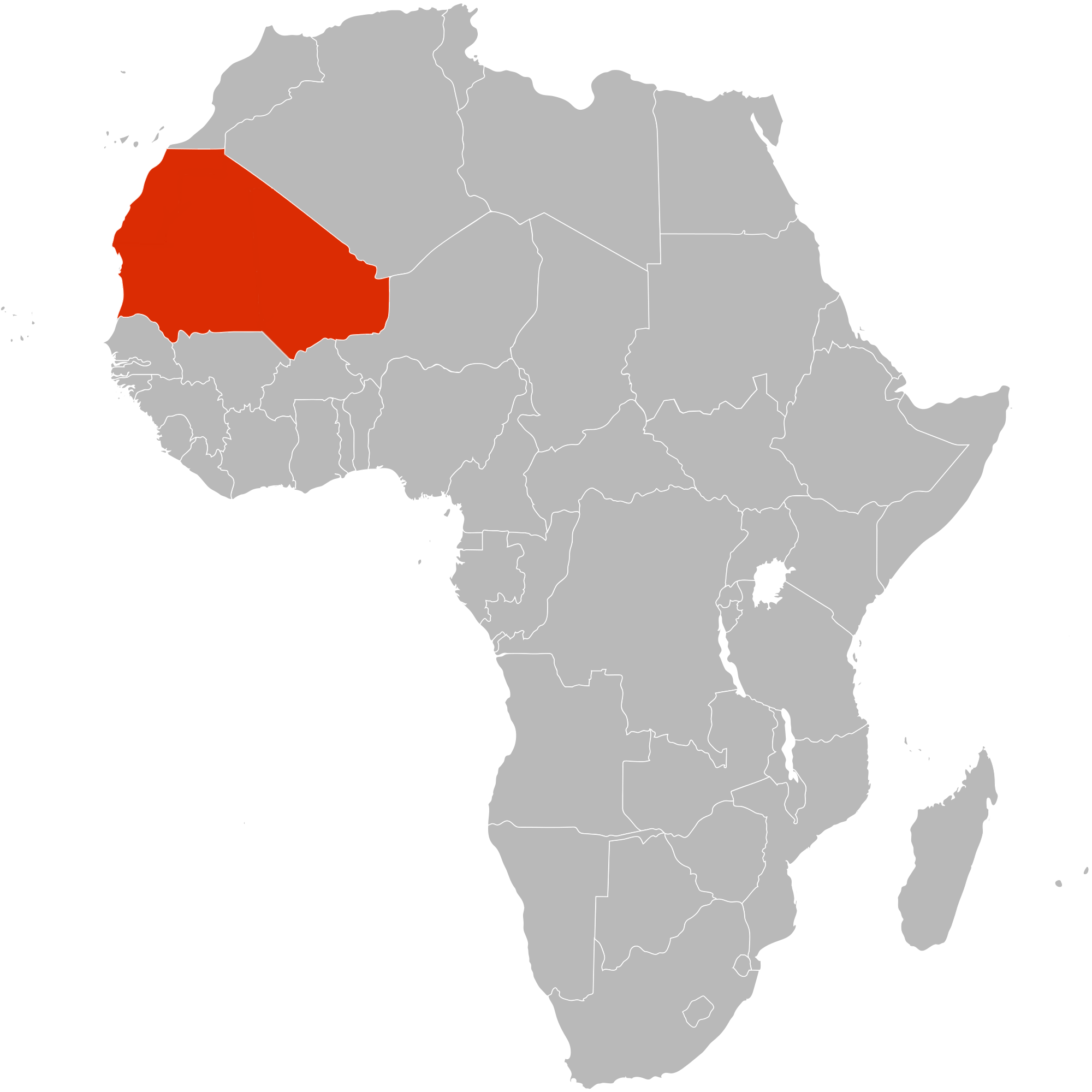|
Morocco–Western Sahara Border
The Morocco–Western Sahara border is in length and runs from Atlantic Ocean in the west, to the tripoint with Algeria in the east. The border has existed purely in a ''de jure'' sense since Morocco's annexation of Western Sahara in 1976–1979. Description The border starts in the west at the Atlantic coast and consists of a single horizontal line, terminating in the east at the Algerian tripoint. The border traverses a thinly populated section of the Sahara desert. History The border emerged during the ' Scramble for Africa', a period of intense competition between European powers in the later 19th century for territory and influence in Africa. The process culminated in the Berlin Conference of 1884, in which the European nations concerned agreed upon their respective territorial claims and the rules of engagements going forward. As a result of this process, Spain announced its intention to declare a protectorate over the north-west African coast between Cape Bojador and Ras N ... [...More Info...] [...Related Items...] OR: [Wikipedia] [Google] [Baidu] |
Ifni
Ifni was a Spanish province on the Atlantic coast of Morocco, south of Agadir and across from the Canary Islands. It had a total area of , and a population of 51,517 in 1964. The main industry was fishing. The present-day Moroccan province in the same area is called Sidi Ifni, with its capital in the city of the same name, but encompassing a much larger territory. History Spain's presence in the area can be traced to a settlement called Santa Cruz de la Mar Pequeña, founded in 1476. After attacks by the Berbers, the Spanish decided to focus on colonising other areas of North Africa and abandoned the region. In the mid-19th century, when the European powers looked again to Africa for resources, Spain suddenly mooted an interest in its lost late medieval fortress in order to stake a claim to the southern part of Morocco. This served as a pretext for a short war with Morocco in 1859. The origin of Ifni must be dated to 1934, after Colonel Osvaldo Capaz took possession of the ... [...More Info...] [...Related Items...] OR: [Wikipedia] [Google] [Baidu] |
Green March
The Green March was a strategic mass demonstration in November 1975, coordinated by the Moroccan government, to force Spain to hand over the disputed, autonomous semi-metropolitan province of Spanish Sahara to Morocco. At that time, the Spanish government was preparing to abandon the territory as part of the decolonization of Africa, just as it had previously granted independence to Equatorial Guinea in 1968. The Sahrawi people aspired to form an independent state. The demonstration of some 350,000 Moroccans advanced several kilometres into the Western Sahara territory. Morocco later gained control over most of the former Spanish Sahara, which it continues to hold. The Green March was condemned by the international community, notably in United Nations Security Council Resolution 380, as the march was considered an attempt to bypass the International Court of Justice's ''Advisory opinion on Western Sahara'' that had been issued three weeks prior. Morocco gained control of ... [...More Info...] [...Related Items...] OR: [Wikipedia] [Google] [Baidu] |
Advisory Opinion On Western Sahara
The International Court of Justice Advisory Opinion on Western Sahara was a 1975 advisory, non-binding opinion by the International Court of Justice (ICJ) of two questions presented to it by the UN General Assembly under Resolution 3292 regarding the disputed territory of Western Sahara (then Spanish Sahara). Morocco had approached the UN to adjudicate its and Mauritania's claims over the territory. The ICJ deliberated between 13 December 1974 and 16 October 1975. The final ruling by the Court stated that: Background Morocco gained independence in 1956, and the Istiqlal Party presented its vision for the new state's boundaries. These nationalists appealed to the idea of a Greater Morocco, based upon the territory of the Sharifian empire which preceded French and British colonization. This area included what was at the time Spanish Sahara, French West Africa, and French Algeria. The Moroccan state itself formally adopted the 'Greater Morocco' vision under Mohammed V in 1958 ... [...More Info...] [...Related Items...] OR: [Wikipedia] [Google] [Baidu] |
International Court Of Justice
The International Court of Justice (ICJ; french: Cour internationale de justice, links=no; ), sometimes known as the World Court, is one of the six principal organs of the United Nations (UN). It settles disputes between states in accordance with international law and gives advisory opinions on international legal issues. The ICJ is the only international court that adjudicates general disputes between countries, with its rulings and opinions serving as primary sources of international law. The ICJ is the successor of the Permanent Court of International Justice (PCIJ), which was established in 1920 by the League of Nations. After the Second World War, both the league and the PCIJ were replaced by the United Nations and ICJ, respectively. The Statute of the ICJ, which sets forth its purpose and structure, draws heavily from that of its predecessor, whose decisions remain valid. All member states of the UN are party to the ICJ Statute and may initiate contentious cases; h ... [...More Info...] [...Related Items...] OR: [Wikipedia] [Google] [Baidu] |
Greater Mauritania
Greater Mauritania () is a term for the Mauritanian irredentist claim that generally includes the Western Sahara and other Sahrawi-populated areas of the western Sahara desert. The term was initially used by Mauritania's first president, Mokhtar Ould Daddah, as he began claiming the territory then known as Spanish Sahara even before Mauritanian independence in 1960. Its main competing ideologies have been Berberism, Sahrawi nationalism, Moroccan irredentism, Mali federationism, Tuareg nationalism and Pan-Arabism. History and background The idea evolved in the 1950's, in tandem and response to the above-mentioned ideas of Greater Morocco. Its main proponents were among the '' beidane'' (light-skinned) community. In 1957, future first president of Mauritania, Mokhtar Ould Daddah, stated that: :''"I therefore call on our brothers in the Spanish Sahara to dream of this economic and spiritual Greater Mauritania of which we cannot speak at present. I address to them and I ask you ... [...More Info...] [...Related Items...] OR: [Wikipedia] [Google] [Baidu] |
Ifni War
The Ifni War, sometimes called the Forgotten War in Spain (''la Guerra Olvidada''), was a series of armed incursions into Spanish West Africa by Moroccan insurgents that began in October 1957 and culminated with the abortive siege of Sidi Ifni. The war, which may be seen as part of the general movement of decolonization that swept Africa throughout the latter half of the 20th century, was conducted primarily by elements of the Moroccan Army of Liberation which, no longer tied down in conflicts with the French, committed a significant portion of its resources and manpower to gain independence from Spain. Causes The city of Sidi Ifni was incorporated into the Spanish Empire in 1860. The following decades of Franco-Spanish collaboration resulted in the establishment and extension of Spanish protectorates south of the city. Spanish influence obtained international recognition at the Berlin Conference of 1884. In 1946, the region's various coastal and inland colonies were co ... [...More Info...] [...Related Items...] OR: [Wikipedia] [Google] [Baidu] |
Treaty Of Angra De Cintra
The Treaty of Angra de Cintra, signed by Spain and Morocco on 1 April 1958, ended the Spanish protectorate in Morocco and helped end the Ifni War. The Spanish foreign minister, Fernando María Castiella y Maíz, and his Moroccan counterpart, Ahmed Balafrej, as well as their respective secretaries, met on the Bay of Cintra in the Spanish colony of Río de Oro between 31 March and 2 April in utmost secrecy to negotiate an end to the clashes between Spain and Moroccan-supported rebels that had begun in October 1957.María Concepción Ybarra Enríquez de la Orden, ''España y la descolonización del Magreb: rivalidad hispano-francesa en Marruecos, 1951–1961'' (Universidad Nacional de Educación a Distancia, 1998), pp. 353–54. The resulting treaty was signed on 1 April. By its terms, Spain would return to Moroccan control the southern zone of its protectorate, which it had retained even after handing over the northern zone in 1956. This zone, called Cabo Juby or the Tarfaya Strip, ... [...More Info...] [...Related Items...] OR: [Wikipedia] [Google] [Baidu] |
Spanish Sahara
Spanish Sahara ( es, Sahara Español; ar, الصحراء الإسبانية, As-Sahrā'a Al-Isbānīyah), officially the Spanish Possessions in the Sahara from 1884 to 1958 then Province of the Sahara between 1958 and 1976, was the name used for the modern territory of Western Sahara when it was occupied and ruled by Spain between 1884 and 1976. It had been one of the most recent acquisitions, as well as one of the last remaining holdings, of the Spanish Empire, which had once extended from the Americas to the Spanish East Indies. Between 1946 and 1958, the Spanish Sahara was amalgamated with the nearby Spanish-protected Cape Juby and Spanish Ifni to form a new colony, Spanish West Africa. This was reversed during the Ifni War when Ifni and the Sahara became provinces of Spain separately, two days apart, while Cape Juby was ceded to Morocco in the peace deal. Spain gave up its Saharan possession following Moroccan demands and international pressure, mainly from United Nati ... [...More Info...] [...Related Items...] OR: [Wikipedia] [Google] [Baidu] |
Greater Morocco
Greater Morocco is a label historically used by some Moroccan nationalist political leaders protesting against Spanish, Portuguese, Algerian and French rule, to refer to wider territories historically associated with the Moroccan sultan. Current usage most frequently occurs in a critical context accusing Morocco, largely in discussing the disputed Western Sahara, of irredentist claims on neighboring territories. The main competing ideologies of the Greater Morocco ideology have been Sahrawi nationalism, Mauritanian irredentism, Spanish nationalism, Berber separatism and Pan-Arabism. Irredentist, official and unofficial Moroccan claims on territories viewed by Moroccans as having been under some form of Moroccan sovereignty (most frequently with respect to the Spanish exclaves), are rhetorically tied back to an accused expansionism. However, Moroccan government claims make no current reference to the Greater Morocco concept. History In 1963, following the Independence of ... [...More Info...] [...Related Items...] OR: [Wikipedia] [Google] [Baidu] |
Plazas De Soberanía
The ''plazas de soberanía'' (, lit. "strongholds of sovereignty") is a term describing a series of Spanish overseas minor territories scattered along the Mediterranean coast bordering Morocco or that are closer to Africa than Europe. This term is used for those territories that have been a part of Spain since the formation of the modern country (1492–1556), as opposed to African territories acquired by Spain during the 19th and early 20th centuries in the Scramble for Africa. Historically, a distinction was made between the so-called "major places of sovereignty", comprising the autonomous cities of Ceuta and Melilla, and the "minor places of sovereignty", referring to a number of islands (and a small peninsula) along the coast. In the present, the term refers mainly to the latter. History During the Reconquista and mainly following the conquest of Granada in 1492, forces of the Castilian and Portuguese kingdoms conquered and maintained numerous posts in North Afri ... [...More Info...] [...Related Items...] OR: [Wikipedia] [Google] [Baidu] |



.jpg)


